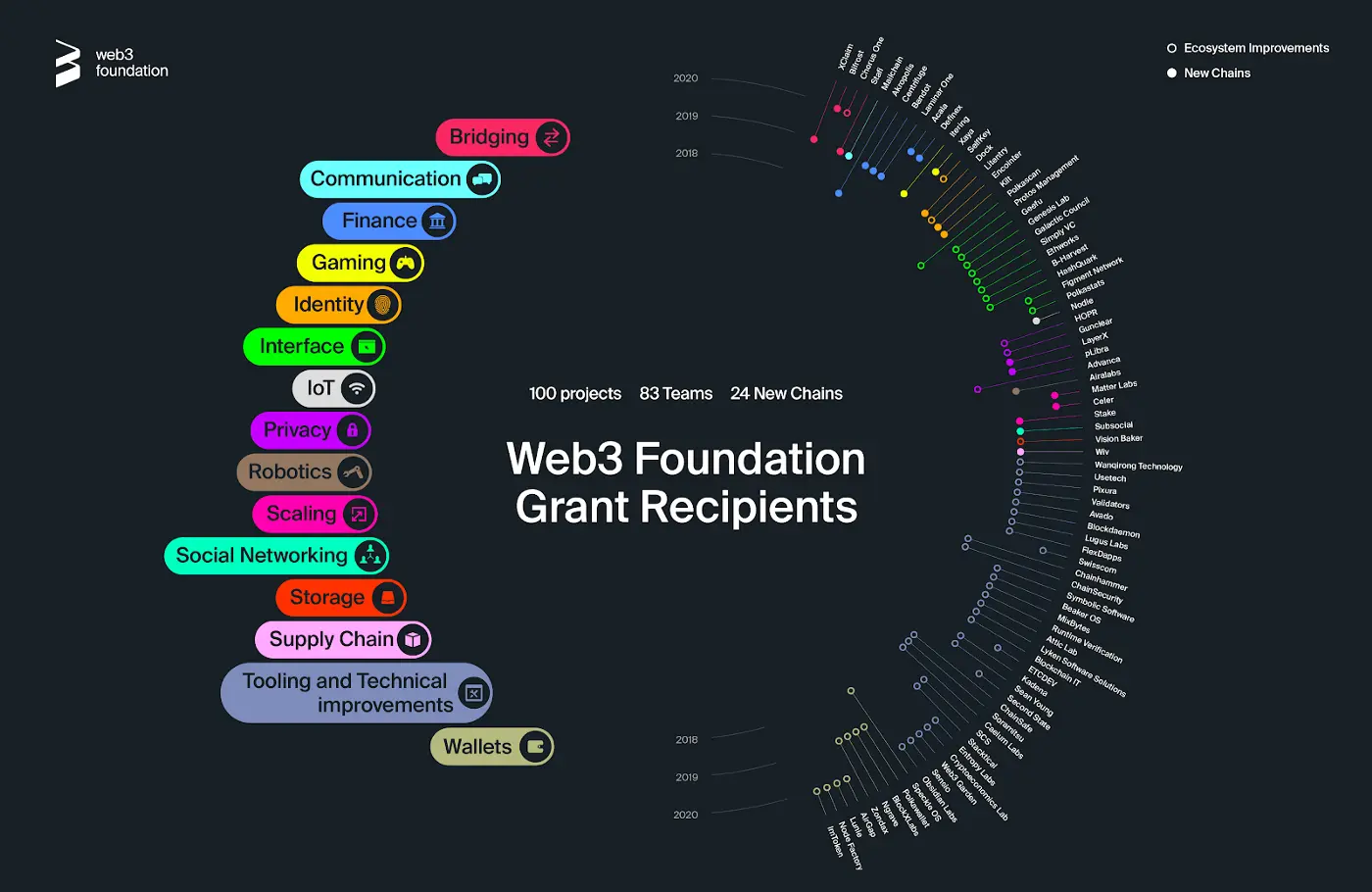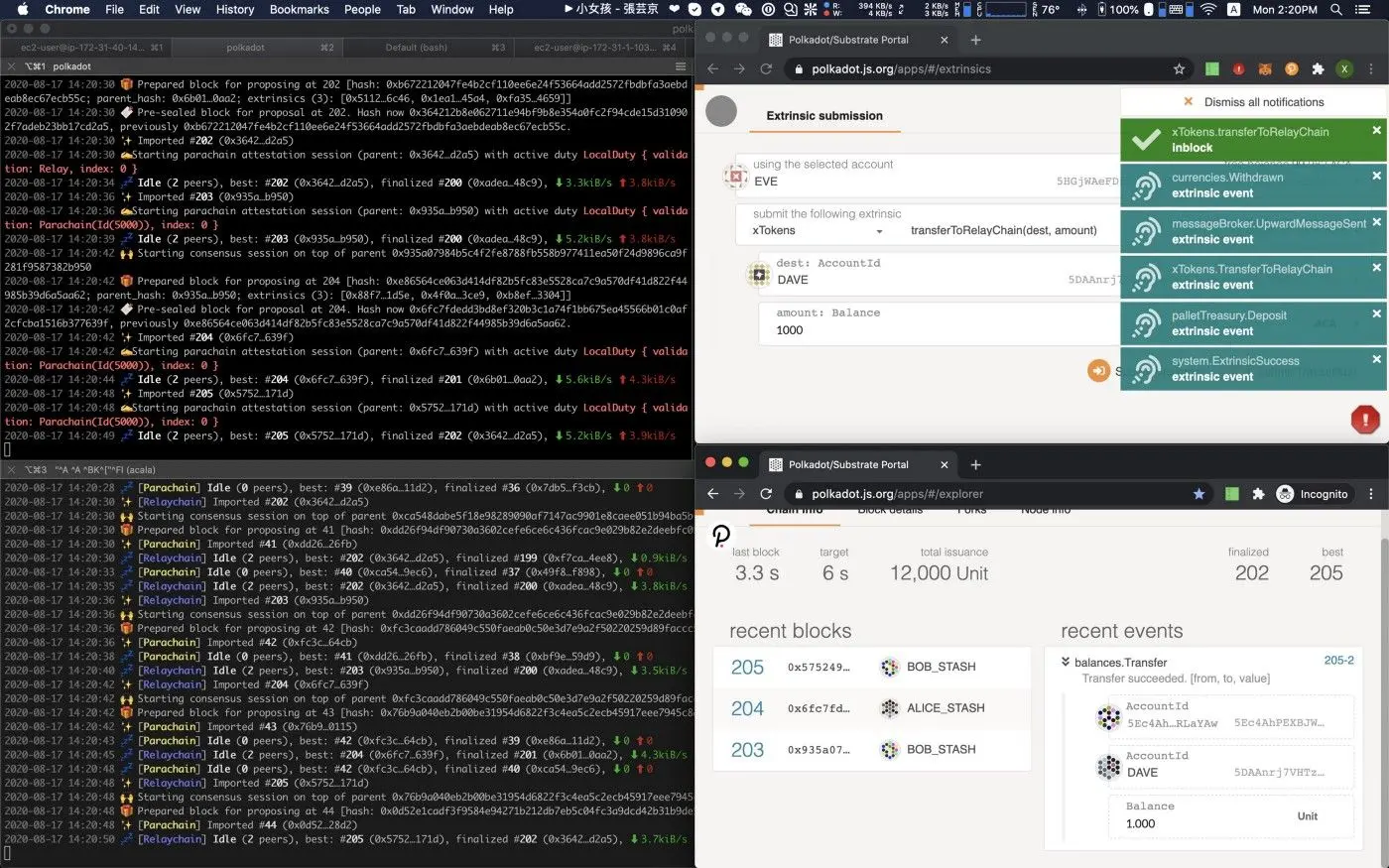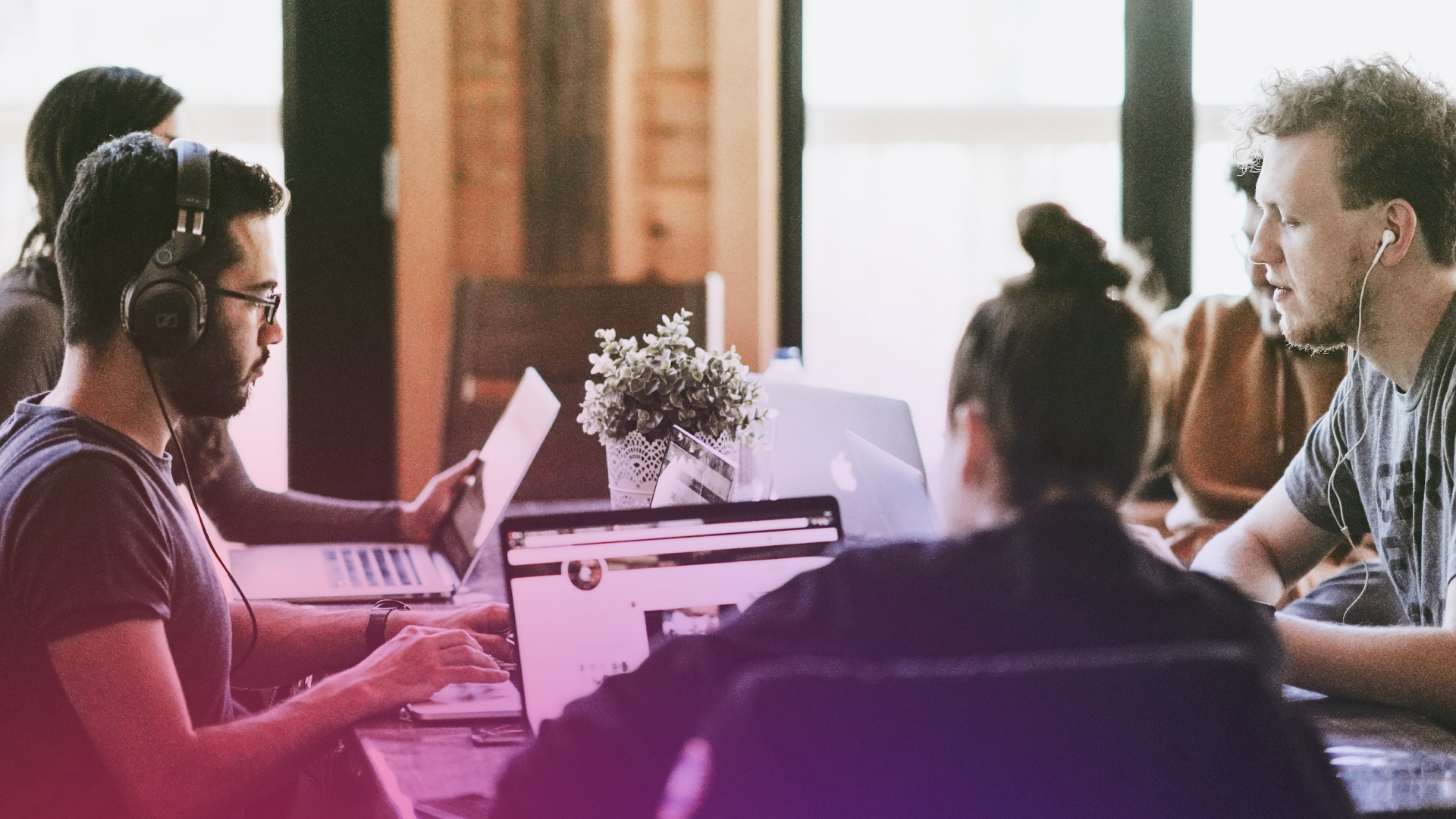Polkadot 2020 Roundup
Polkadot emerged strong in 2020, with major launches, treasury expansion, and staking dominance. Here's a roundup of achievements and plans for 2021.
 By Dr. Gavin Wood•December 30, 2020
By Dr. Gavin Wood•December 30, 2020
Despite being a tough year for pretty much everyone (with the possible exception of Amazon and takeaways), the Polkadot network and community is coming out of 2020 with the wind very much behind its sails. So now that we’ve reached the end of 2020, for better or worse, let’s have a roundup of what we achieved and what we’re planning to do over the course of 2021…
I tend to start these roundups with a few statistics, and this year seems no exception. Development has continued apace, with the Rust codebase standing at well in excess of half a million lines of code. Around half of the 577 kLOC total is in the Substrate repository, which itself has now been forked by more than 1,000 Github users and has collected 3,515 stars from developers across the world. That code has been added in almost 5,000 separate improvements over the 3 years it has been in existence. Over 2,600 developers sit in the Substrate Technical channel, nearly tripling from less than 1,000 at the beginning of the year.
Over 2020, more than 200 projects have been funded between the grants programmes and treasuries. Since launching with governance a few short months ago, Polkadot’s treasury has funded 23 proposals to a total of 118,465.63 DOT. In Kusama’s year or so of being live, its treasury meanwhile has funded 40 proposals awarding a total of 62,222.92 KSM. This is all in addition to the $4.1m granted to 145 proposals done as part of Web3 Foundation’s ongoing grants programme. And of course there are a growing number of ecosystem funds centred around Polkadot ready to support great projects.

At time of writing, of the 1.02bn DOT which exist within Polkadot, 63% are locked into the staking system. Polkadot became the number one network for staking by value staked in its six short months of existence. A further 10.4m DOT sits in the Polkadot treasury ready to be spent on great proposals, and this is set to increase at around 1.6m DOT each year, funded from part of Polkadot’s 10% annual token-base minting rate.
Launches
Though there have been many launches within our ecosystem during 2020, surely the most notable is that of Polkadot itself, happening in a smooth and staged rollout. In May, we rolled out the Polkadot launch roadmap to kick off what was to come, along with the first episode of “Polkadot: Behind the Code,” recounting how we got there. Beginning with the claims process (for original participants), then following with the genesis block of a permissioned PoA network, Polkadot evolved into an NPoS network and became first unpermissioned, and later a transferable token by decentralised vote.
This process truly showcased the power of Substrate’s incredible Webassembly-based metaprotocol, allowing seamless upgrades to happen over time which changed the fundamental nature of the network and allowed a high-stakes network such as Polkadot to be launched in gradual, low-risk steps.
At the end of Polkadot’s launch was the rather exciting redenomination vote, conducted on the fledgling network. It allowed the community to come together and decide what the denomination of the DOT token should be in terms of Polkadot’s indivisible unit, the Planck. Transferability and then Denomination Day landed sequentially as Polkadot’s native DOT token started life in the top tier of blockchain networks.
Following the smooth launch, Polkadot has been steadily increasing the size of its validator set, beginning at 197 immediately after launch and increasing by one each 24 hour period. With 274 validators, run by around 200 independent operators and backed by over 7,000 individual nominating accounts, Polkadot is arguably the most decentralised high-value (and therefore secure) network in existence.
There have of course been other launches over the last 12 months. Of note is the launch of Westend, Polkadot’s main long-term valueless testnet and two versions of Rococo, Polkadot’s short-term parachains public testnets.
But the year wasn’t all cake and gravy from the start! Kusama’s first adventure on January 6th happened shortly after its own launch and it certainly primed us for the excitement to come: a botched upgrade required us to “wind back time” to fix things before going back to the future at warp speed to catch up with reality. Lessons learnt and thankfully we never needed to repeat that slightly “mixed” experience with Polkadot.
Treasuries, Governance and Decentralisation
This year, the first Polkadot treasury proposals were submitted and approved, firmly placing Polkadot as a heavyweight in the community treasury and on-chain governance space (though all credit to Kusama for blazing this particular trail). Between the redenomination vote, validator set size increase voting and the lively chatter on both Element and the Polkassembly, it’s clear to see the community taking a healthy interest in Polkadot’s future.
The treasury stands at over ten million DOT which will just be slowly burned unless good proposals come forward, so let this be a call to action! Propose something great for Polkadot and if the elected council agrees then Polkadot will fund you!
With regards staking, despite being the number one platform for staking, we will not be resting on our laurels. The 1000 Validator Programme (“1KVP” for those in the know), having seen success in Kusama, has been launched for Polkadot and is backed by the Web3 Foundation’s DOT treasury. Having taken the number of validators on Kusama to 700 and now on its way to 900, we expect Polkadot to follow the same trajectory while remaining decentralised with the help of this scheme. With the 100 parachain target requiring a minimum of 1,000 validators, this effort is foundational to ensuring the decentralisation of the Polkadot validator set and the overall ecosystem’s long-term success, which lies with its constituent layer-one parachains.
And, beyond the 1KVP, the Web3 Foundation recently also deployed its initial automated identity registrar service for Polkadot and Kusama. This identity service is cheap, efficient and highly recommended for validators, councillors and proposers to use to help build a bit of reputation. It sits alongside others provided in the community and will perhaps provide a little market-optimising competition.
Building Bridges
While Polkadot is first and foremost a heterogeneous “sharded” multichain, one of Polkadot’s chief aims is to facilitate interoperability, both between its own constituent parachain “shards” and with chains and platforms which are not native to Polkadot.
Ethereum remains a key system for development of smart contracts, both as a network and a development platform. To facilitate better interoperability and compatibility between the two ecosystems (and avoid teams needing to commit to one or the other), we have been investing our time and energy into several projects which have been bearing fruits over 2020.
Frontier is the codename of Parity’s Ethereum-Substrate compatibility project and it recently got to an initial level of feature-completion. As of the end of 2020, Frontier allows any Substrate chain (and thus also Polkadot parachain) to appear exactly as an Ethereum chain in most important ways. Specifically, both in terms of the EVM smart contracts that it can host and in terms of any tooling (such as Metamask and Truffle) that utilise the Web3 RPC. In addition to this, there is compatibility on the level of genesis state and even an additional “precompile” contract which allows the EVM smart contracts to interact with the rest of Substrate (and thus, in the case of a parachain, Polkadot).
The compatibility means that projects such as Moonbeam, Acala and others can provide complete Ethereum compatibility with their developer-base and users while still being Polkadot native.
In addition to this compatibility, two inter-chain bridges have been under heavy development during 2020 and are both expected to launch in early 2020: One for Bitcoin (BTC) mainnet developed by Interlay and the other for the Ethereum mainnet developed by Snowfork. The latter has undergone some very important design alterations allowing it to securely transport arbitrary smart-contract messages between Ethereum and Polkadot rather than merely tokens.
Substrate, Cumulus and Parachains
This autumn, Substrate 2.0, the long awaited upgrade for Parity’s groundbreaking blockchain development platform was released. With it came a number of important overhauls possibly the biggest being the introduction of Off-Chain Workers, a framework to allow the on-chain (and thus transparent, expensive and deterministic) logic to seamlessly integrate, dispatch and interact with, off-chain (and thus opaque, cheap and non-deterministic) logic. This opens the door to all sorts of opportunities from oracles and actuators, to backend storage, encryption and more.
Though often unsung heroes, over the course of the year, numerous important pieces of tooling have been being developed in the background by Parity to aid the user base of Substrate in real-world integration, deployment and testing. Sidecar, TxWrapper, Substrate Archive and SubXt are all great examples of bringing Substrate (and thus every Polkadot parachain), to the utility of the ecosystem.
Earlier in the year, the first “v0” version of Rococo, our set of parachain testnets, launched. This started with three basic currency parachains, one of which was upgraded into a Wasm smart-contract parachain shortly thereafter through the magic of on-chain upgrades. Following this, many community teams started deploying their own parachain testnets into it, with more than ten teams eventually joining the party and merrily passing messages between themselves with the interoperability of Rococo.

The first successful interchain asset transfer using the new XCM message format and the Rococo-v0 HRMP message passing protocol happened this year on September the 12th. This demonstrated not only a new message format, but a new means of allowing chains to communicate with each other and to integrate their native services into that format without compromising on ease, flexibility or code complexity. Compared to pre-existing interoperability formats such as ERC-20, XCM provides a dramatically increased set of expressibility covering not just basic token transfers but interchain routing, scripting and exchange, arbitrary assets and underlying trust models, just as you might expect is needed for the first layer-zero blockchain platform.
Following Rococo v0’s launch and success, Rococo v1 was launched a few days ago as something of a seasonal gift for the community. Cumulus is also reaching its initial stage of feature-completion, ready for use with the new Rococo testnet and the “Parachains v1” code that powers it. It begins with a few basic parachains with the induction of community chains expected to begin in the new year.
Polkadot has over 100 parachains in development with over 50 seeking full parachains slots, so a thriving community within Rococo v1 is perhaps not to be unexpected.
Community and Events
What a year it has been for community events. While most events have been virtual (Shanghai’s Web3 Forum a notable exception), the number and quality of the online events has been astounding. In Asia alone, we’ve had over 70 online and offline events and presentations, together with community and local partners. During 2020, we’ve published over 1,000 Polkadot/Kusama/Substrate-related articles, news, videos, gaining well over 1 million total readings between hundreds of thousands of readers. The three-city Polkadot China tour alone attracted 700 meatspace attendees to talk about all things parachains.
Hackusama, the first Polkadot/Kusama hackathon launched and was a great success. Two online Subzero developer conferences also happened, successfully disseminating knowledge and understanding of the Substrate platform and its incredible builder community, with the second attracting around 1,500 attendees.
Over 300 developers have now been through our well-received one-month Substrate developer course, with most students seeing the effort all the way through to graduation. This has happened in three separate cohorts and we’ll be continuing this initiative through 2021, with the fourth cohort already underway.
The Web 3.0 Bootcamp has been successful in incubating teams and taking them through their initial funding round. Over 2020, 13 teams graduated the programme and eight projects raised around $10m from VC funds in China, UK, US, and Europe. Most of the bootcamp’s teams made significant partnerships with other builders during the programme along with hosting many community events with more established entities in the space like Web3 Foundation and Parity Technologies.
Two of the biggest events of the past year were the Web3 Forum and Polkadot Decoded. The Web3 Forum was an impressive in-person conference set in Shanghai. It lasted for two days and attracted more than 500 meatspace guests, with more than 70 renowned speakers expressing their thoughts and opinions, including e.g., Dr. Xiao Feng, Chairman of Wanxiang Blockchain and He Yifan, Executive Director of BSN. The forum also served as a bridge for different teams to meet and collaborate.

Polkadot Decoded, an online-only event, was the largest single-protocol blockchain conference of 2020 and the first community conference since Polkadot launched. It attracted more than 7,000 registrations and 4,500 views and growing. We’re already planning Decoded 2.0, which will feature a community-led agenda setting process. This is open now for you to make submissions for talks, so send in your ideas soon!
Teams and Projects
There have been a lot of notable project releases within the community over the last 12 months. LimeChain released their first proof of concept of Subsembly, a framework for building Substrate and parachain runtimes in AssemblyScript, opening the door for AssemblyScript afficionados to code up lightweight and fast parachains in their favourite language.
Equilibrium released the initial version of their IPFS integration for Substrate’s Off-Chain Workers (cunningly named offchain::ipfs). This basically lets you hook up your Substrate blockchain (and by extension Polkadot parachain) into IPFS, storing and fetching data to the massively global storage network right from the runtime code!
Another interesting recent release was the Metamask plugin for Polkadot by Node Factory. Whereas Metamask can now be used unmodified by any Substrate-based chain which makes use of the Ethereum-compatibility layer Frontier, this project works the other way around modifying Metamask with a snap (i.e. a plugin) so as to make it work directly with Substrate’s RPC.
Indeed, the Polkadot community now consists of well over 100 teams and projects covering a broad set of uses. China alone has over 30 teams that are building systems, projects and components for the Polkadot ecosystem. Many of these are active in the community and household names in our Element channels including Acala, Phala, Crust and Darwinia amongst others, contributing code, feedback and encouragement for the entire Polkadot community.
We’ve seen some household names from other ecosystems committing to the Polkadot network. Chainlink chose Polkadot as its next network after Ethereum, as did Gitcoin, showing true signs of infrastructure developer adoption. In the latter case, we launched Hello World! following the integration work which has been Gitcoin’s largest hackathon by participation this year.
Polkadot is now the 2nd most active DeFi ecosystem after Ethereum (and growing fast) and also has the most developer traction and stickiness out of any next-generation protocol. Unsurprisingly, this success has attracted some attention in the press and VC circles.
Looking Forward
Let us hope that 2021 brings us a little more physical freedom than the virus-ridden year of 2020 has; on a personal level I miss the various meetups around the world that allow me to get to know the many great people building awesome stuff in this wonderful ecosystem.
But hopes of travel aside, if in 2020 we deployed Polkadot and demonstrated its core technology, 2021 will see the integration of that technology into the mainnet. The external auditing for the “Parachains v1” code as well as key components for the various bridges is already in progress and the first few months of 2021 is looking to be a very exciting time for all of us, with parachains, slot lease auctions, crowdloans, bridges, XCMP-lite, XCM and Cumulus set to land, not to mention the 50-or-so parachain teams who will be vying for their slot to launch.
In addition to all this, the next major version of Substrate, version 3.0, is likely to be released in the first half of next year which will bring Ethereum compatibility, the new, improved and much more idiomatic Frame Pallet API, a new (much faster) database backend and the end-to-end weights system.
Wrapping up…
And with that I’ll be signing off for another year. All that is left to say, once again, is happy holidays and have a festive new year!











